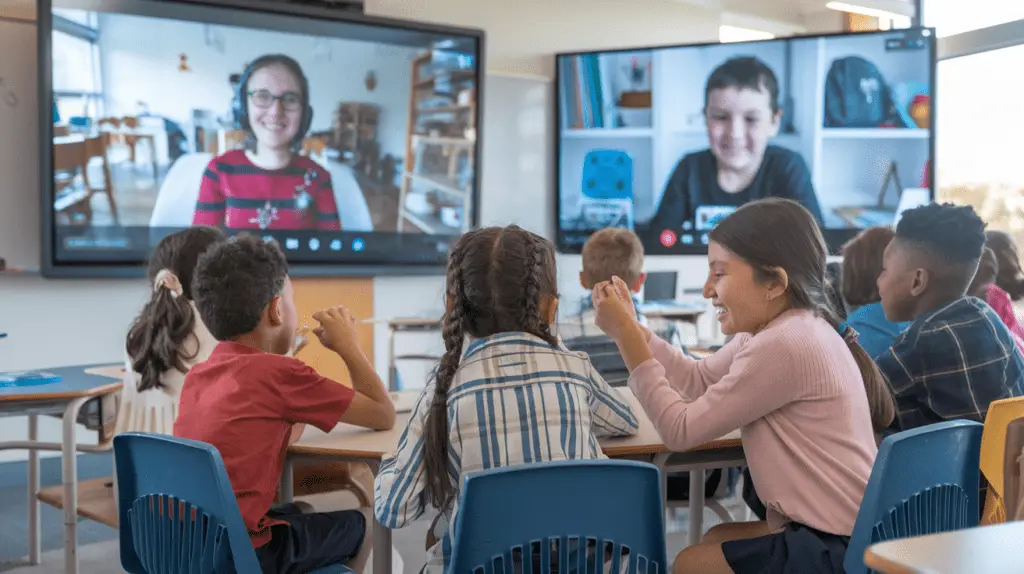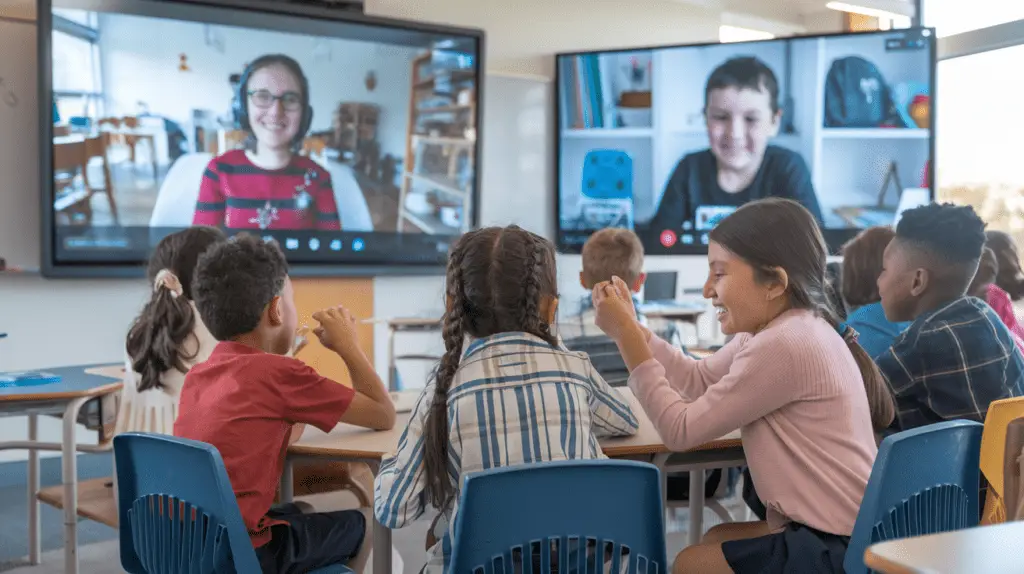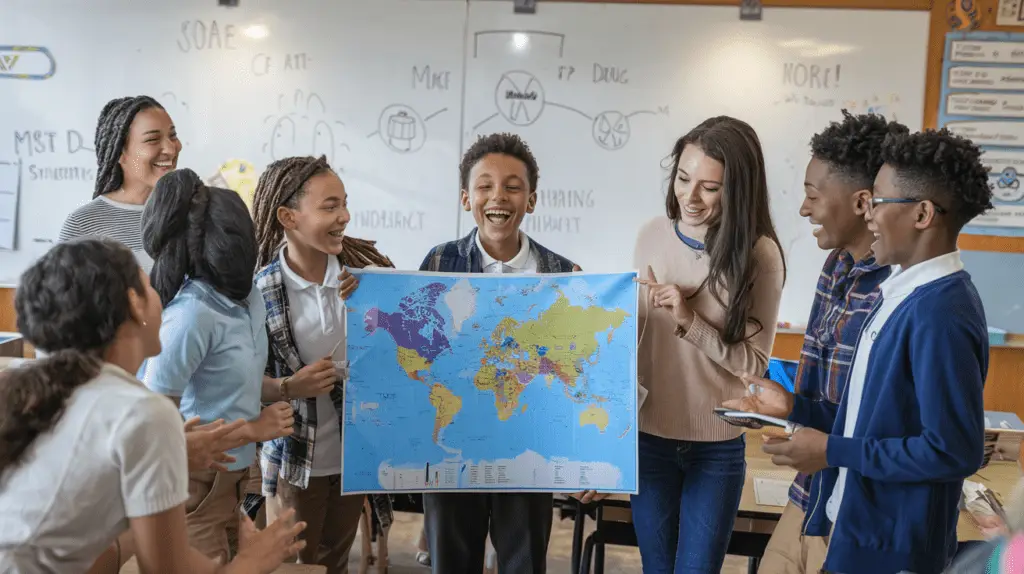Are you an educator looking to revolutionize your teaching methods and provide your students with International classroom networking and unparalleled global experiences? This is the key to unlocking a world of opportunities for both you and your learners. At Class2Class, we’re passionate about connecting educators and students across borders, fostering cultural understanding, and preparing the next generation for an increasingly interconnected world.
Why International Classroom Networking is Essential in Today’s Educational Landscape
In our rapidly globalizing society, it’s more crucial than ever to equip our students with the skills and knowledge they need to thrive in a diverse, multicultural environment. International classroom networking goes beyond traditional teaching methods, offering a dynamic and engaging way to broaden horizons and create lasting connections that transcend geographical boundaries.
Let’s delve into five transformative benefits that international classroom networking can bring to your classroom, revolutionizing the way you teach and the way your students learn:
1. Cultivating Deep Cultural Understanding and Global Awareness
International classroom networking provides a unique and invaluable opportunity for students to engage with peers from diverse cultural backgrounds. Through direct interactions and collaborative projects, students gain firsthand knowledge of different perspectives, traditions, and ways of life. This exposure helps break down stereotypes, fosters empathy, and nurtures a genuine understanding of global diversity.
For instance, a recent Class2Class collaboration between students in Japan and Brazil allowed them to explore each other’s cultural festivals in depth. The Japanese students shared their experiences of participating in the Obon Festival, explaining the significance of honoring ancestors and the beauty of traditional dances. In return, the Brazilian students offered vivid descriptions of the vibrant Carnival celebrations, discussing the historical roots and the explosion of music, dance, and color that characterizes this world-famous event.
This exchange not only broadened their cultural knowledge but also helped them identify surprising similarities in the way both cultures celebrate community and tradition. Students from both countries reported a newfound appreciation for cultural diversity and a desire to learn more about other cultures around the world.

2. Enhancing Language Skills and Communication Abilities Through Authentic Interactions
When students engage in international classroom networking, they naturally practice their language skills in authentic, real-world contexts. Whether they’re communicating in a shared language or learning bits of each other’s native tongues, these interactions provide invaluable opportunities for language development that simply can’t be replicated in a traditional classroom setting.
Sandra Maj, a dedicated teacher from Poland, shared her experience: “Through our Class2Class projects, my students have significantly improved their English skills in ways I never anticipated. They’re noticeably more confident in speaking and writing, and they’ve even picked up some phrases in Spanish from our partner class in Mexico! It’s been incredible to watch their language abilities flourish through these meaningful international connections.”
The beauty of international classroom networking lies in its ability to make language learning a living, breathing experience. This intrinsic motivation often leads to faster language acquisition and a deeper appreciation for the nuances of cross-cultural communication.
3. Nurturing Essential 21st Century Skills for Future Success
International classroom networking serves as a powerful catalyst for developing crucial 21st-century skills that are essential for success in our increasingly globalized world. These skills go beyond traditional academic knowledge and prepare students to be adaptable, innovative thinkers in a rapidly changing global landscape.
Collaboration skills are significantly enhanced through working on projects with international peers. Students learn to navigate time zone differences, cultural nuances, and varying work styles, preparing them for future careers in an increasingly globalized workforce. A recent project on renewable energy sources brought together students from India and Canada, challenging them to collaborate on creating innovative solutions for reducing carbon footprints in their respective countries.
Digital literacy is naturally improved as students use various online tools and platforms for communication and project work. From video conferencing to collaborative document editing, students gain hands-on experience with technologies that are becoming increasingly important in both educational and professional settings.
Adaptability is fostered as students learn to navigate the complexities of cross-cultural communication and project management. They become more flexible in their thinking and approach to problem-solving, valuable skills in our rapidly changing world.
4. Boosting Student Engagement and Motivation Through Global Connections
International classroom networking brings an exciting and dynamic element to learning that can significantly boost student engagement and motivation. The prospect of connecting with peers from different countries adds a sense of adventure and real-world relevance to classroom activities, making learning more engaging and memorable.
Anuradha Sharma, an innovative teacher from India, noted: “Since we started participating in Class2Class projects, I’ve seen a remarkable increase in my students’ enthusiasm for learning. They’re eager to share their culture and learn about others, making our lessons more dynamic and interactive. Even students who were previously disengaged are now actively participating, excited by the prospect of connecting with peers around the world.”
This increased engagement often extends beyond the specific international classroom networking activities. Students become more curious about global issues, more interested in learning languages, and more motivated to excel in their studies overall. They begin to see the relevance of their education in a global context, which can have a profound impact on their academic performance and future aspirations.

5. Fostering Professional Growth and Innovation for Educators
International classroom networking isn’t just beneficial for students – it offers tremendous opportunities for teachers’ professional development as well. By collaborating with educators from around the world, you can expand your teaching repertoire, gain fresh perspectives on curriculum development, and stay updated on global educational trends.
Noriko Matsubara, a forward-thinking teacher from Japan, shared her experience: “Class2Class has opened up a whole new world of professional growth for me. I’ve learned so much from my international colleagues and have been able to implement new teaching strategies that have greatly benefited my students. The platform’s focus on integrating UN Sustainable Development Goals has also inspired me to incorporate more global issues into my curriculum.”
Through international classroom networking, teachers can:
- Share best practices and innovative teaching methods across cultures
- Gain fresh perspectives on curriculum development and assessment strategies
- Expand their professional network on a global scale
- Stay updated on international educational trends and policies
- Collaborate on research projects and educational initiatives
This global perspective can reinvigorate your teaching practice, inspire new approaches to familiar subjects, and help you better prepare your students for the challenges and opportunities of our interconnected world.
Embark on Your International Classroom Networking Journey with Class2Class
Ready to transform your teaching and provide your students with invaluable global experiences? Class2Class makes it easy to get started with international classroom networking:
- Sign up for a free account on our user-friendly platform
- Create your detailed classroom profile, specifying your collaboration interests and teaching goals
- Browse and connect with international classrooms that align with your objectives
- Choose from our extensive library of SDG-aligned projects or create your own custom collaboration
- Start collaborating and watch your students’ global competencies flourish!
Our platform provides a safe, secure environment for international collaborations, with features designed to enhance the learning experience and streamline the process for busy educators:
- Seamless integration with UN Sustainable Development Goals (SDGs)
- Structured Collaborative Online International Learning (COIL) framework
- Extensive library of ready-to-use lesson plans and activities
- Intuitive project management tools to keep collaborations on track
- Professional development resources and teacher certification upon project completion
Don’t miss out on the opportunity to revolutionize your teaching and provide your students with transformative global experiences. Join the thousands of educators worldwide who are already using Class2Class to unlock the power of international classroom networking!
To learn more about the impact of global education, check out this informative article from UNESCO on global citizenship education.


